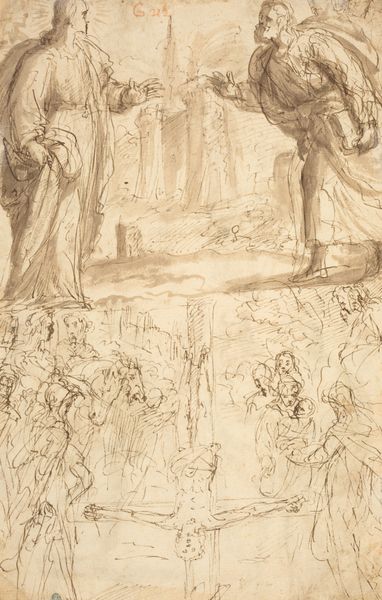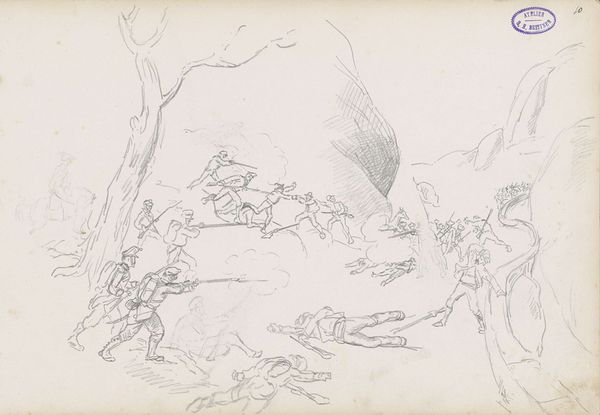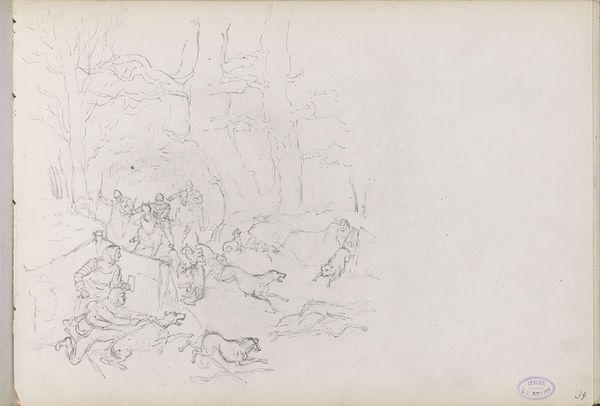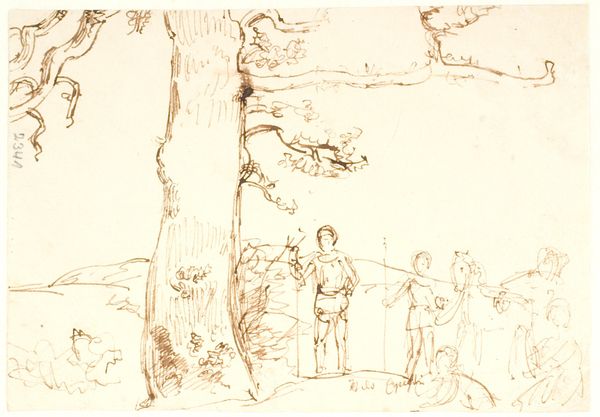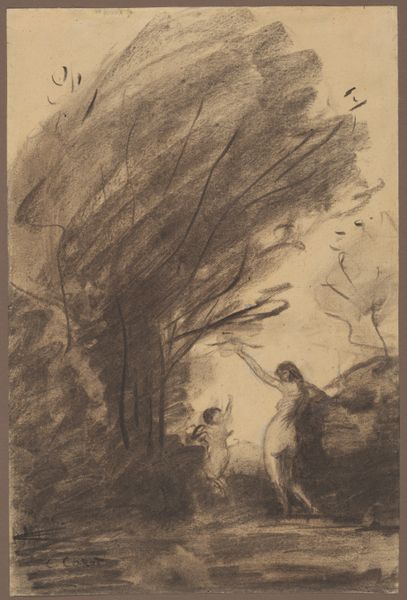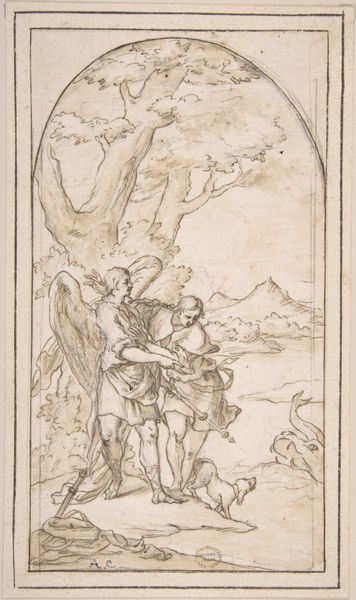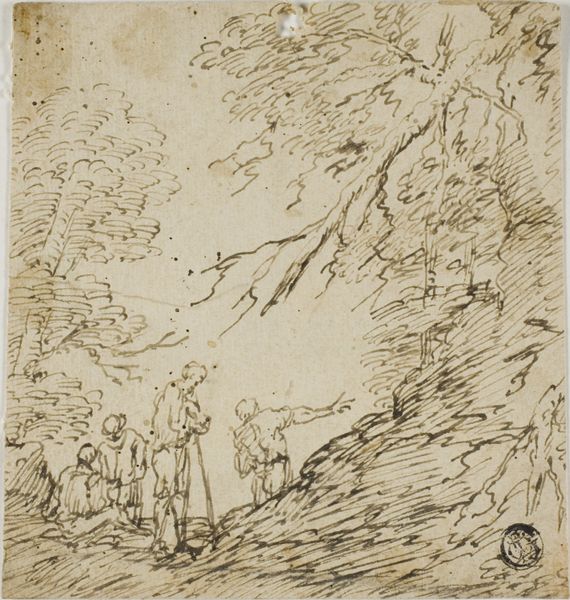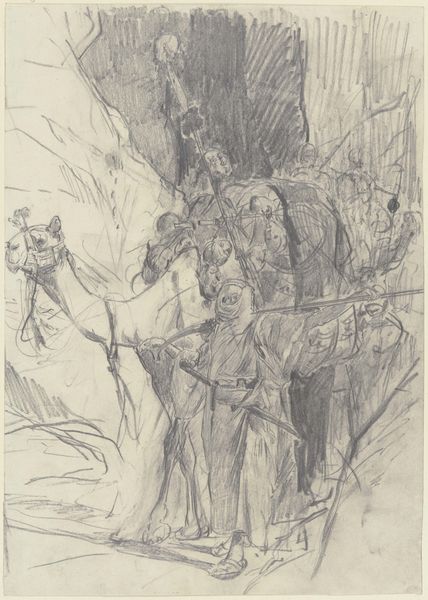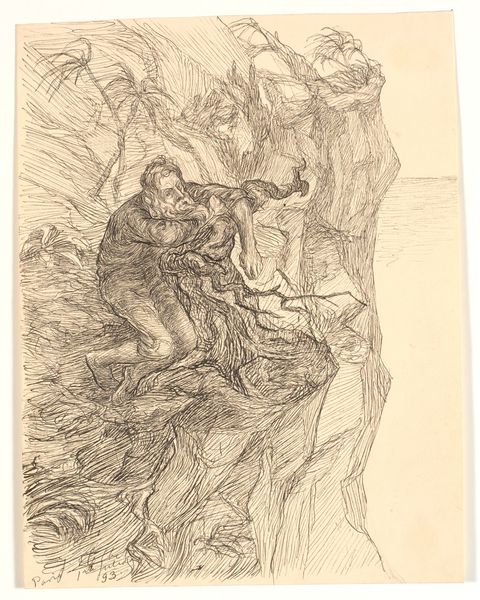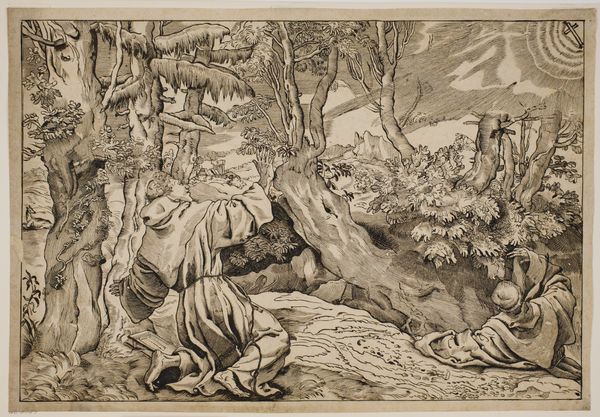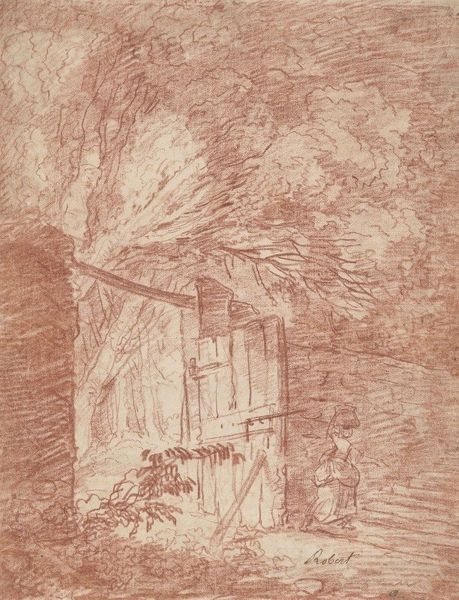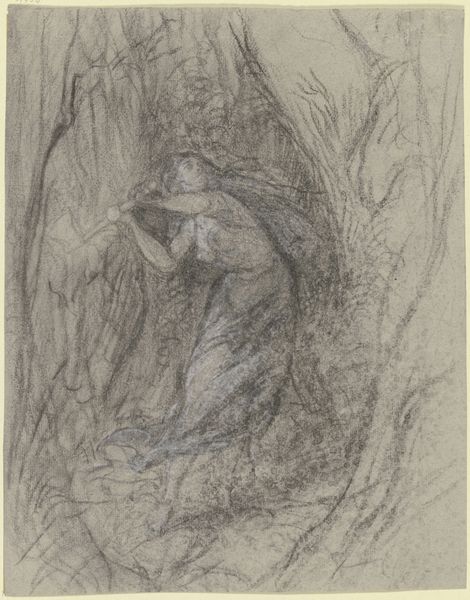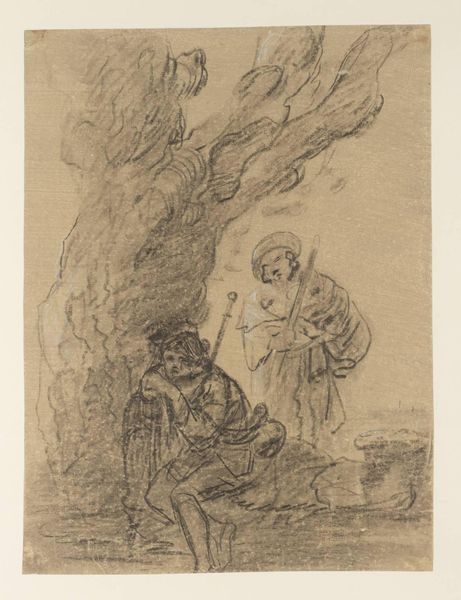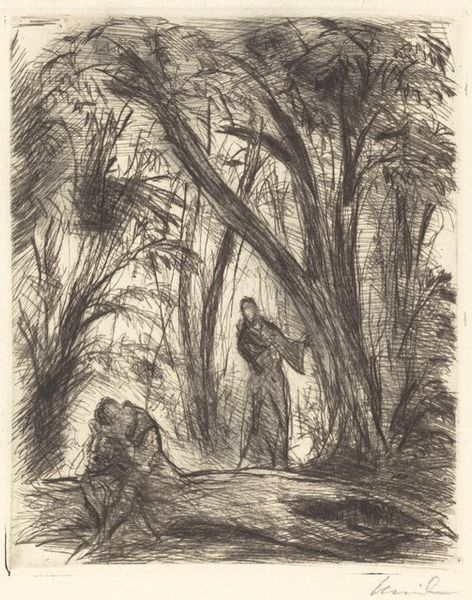
Copyright: Public Domain: Artvee
Curator: The artwork before us, “Don Quixote and Sancho Panza Witness the Attack on Rocinante,” a drawing rendered around the 1780s by Jean-Honoré Fragonard, offers an interesting lens through which we can view the social interpretation of Cervantes’ novel at the time. Editor: I'm immediately struck by the rawness of the piece; the energy practically leaps off the page despite its monochrome palette. The hurried charcoal and pencil work give the scene a frenetic feel, emphasizing the chaos of the attack. It reminds me of contemporary struggles against injustice. Curator: Indeed, Fragonard captures the spirit of turmoil. However, what’s interesting to me is how he’s framing this narrative moment within the established art world of the time, referencing the literary canon but doing so with a seeming lack of high-finish which was fashionable. It perhaps indicates shifting audience expectations in viewing this material. Editor: I read it as Fragonard engaging in a meta-commentary on the absurdity of heroism. Don Quixote’s delusion contrasts with Sancho Panza's grounded shock—it underlines how power structures uphold ridiculous and harmful fantasies that harm actual individuals like his horse! We continue to reward the pursuit of damaging mirages even today. Curator: Your focus on the social implications is interesting. I do think one must appreciate the Romantics' fascination with literature, how they sought narrative drive to promote feeling. It helped cultivate public audiences for artworks with emotional power in a different, less strictly academic way. The artist is almost inviting a new kind of experience to the drawing through its lack of refinement. Editor: I see that push, yet am convinced the drawing reveals anxieties around those ideals, perhaps critiquing its romantic hero figure. Is Fragonard glorifying or condemning Quixote’s blind chivalry by showing his complicity in absurd conflicts? Art is an exercise of ideology so there are definitely gendered politics being made with the scene shown to us. Curator: Ultimately, the drawing encapsulates an era in transition, where artists navigated a new relationship with classical storytelling. It showed in some sense an opportunity to rethink audiences expectations in viewing subjects in both visual and literary arts. Editor: Agreed. Exploring these dimensions invites crucial dialogue about history's impact on now. Understanding that interplay is essential to analyzing any piece in truth.
Comments
No comments
Be the first to comment and join the conversation on the ultimate creative platform.
